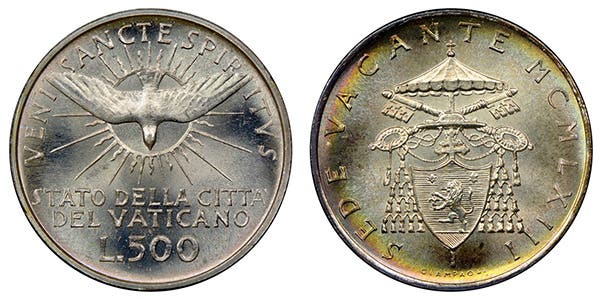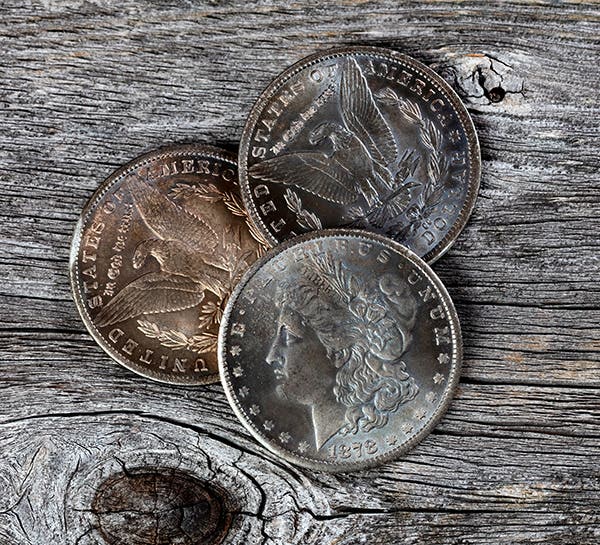CoinClinic: ANA Came Late to the Slabbing Game
Giedroyc on coin grading/certification, colorized coins, proof strikes, 1866 “Candlestick” 3-cent nickel, and more.
Was the American Numismatic Association the first to slab coins?
The ANA Certification Service, or later ANACS, began encapsulating coins it had authenticated and graded in 1989, making the organization a Johnny-Come-Lately. The encapsulating, or slabbing, of coins, was introduced in early 1986 by ACG Accugrade, quickly followed by the Professional Coin Grading Service. Prior to that, the Redfield Hoard of silver dollars had been slabbed by Paramount Corporation.
Was the ANA service the first to examine coins for their grade and authenticity?
ANACS commenced operations in 1972 as a coin authentication service. Even then, it was not the first service to authenticate coins. ANACS did not begin offering an opinion on a coin's grade until 1979. The service returned an examined coin with a photo certificate prior to encapsulating the coins 10 years later. While this was a step forward, the photographs were seldom sufficient to prevent someone from switching coins to be associated with the certificate.
Who founded the first authenticating coin service?
In 1962, Walter Breen founded the Institute of Numismatic Authenticators with Don Taxay and Lynn Glaser. On his INA stationary, Breen handwritten an opinion of a coin's authenticity. He did not offer an opinion of the grade. Since any coin of the same date and mintmark could be associated with Breen’s stationery, the service lasted less than a year.
Why did both the ANA (initially) and the INA only offer authentication services, but no opinion of the grade of a coin?
Grading was in turmoil during the 1960s and 1970s; however, counterfeiting, especially of U.S. gold coins, was rampant and, for that reason, took priority. William Sheldon’s numerical grading system was introduced in 1949 but had yet to take hold. Yes, grading was also a concern since there was no standard to which most dealers agreed, making it challenging for any potential service to offer an opinion. It didn’t help that although Sheldon’s numeral system was being used, the more antiquated verbal system used such terms as Good, Fine, and Uncirculated as well.
What standards were used when coin grades were being established by the companies that would grade them?
It is generally agreed upon that the grade of a coin should be determined by the strike, state of preservation, luster, color, and eye appeal of that coin. The age of the coin may be considered if the technology used to produce it was significantly different from how coins are minted today. As an example, you can’t grade a Massachusetts Pine Tree shilling by the same parameters as you would a Morgan silver dollar. You likewise can’t grade a crudely struck coin of Portuguese Goa by the same standard as you would a coin struck using better technology somewhere else in the world at the same time in history.
Can you explain why [Dr. William] Sheldon introduced a grading system that used 70 points? Isn’t that an awkward number? Why not 100 points?
Sheldon was interested in the value of 1793 to 1814 large cents. He calculated (to his satisfaction) that a large cent in perfect condition was worth 70 times as much as a large cent that was in its lowest possible grade – that being one. He published this in his work “A Quantitative Scale for Condition.” I doubt this was true even when Sheldon introduced this theory, but the idea of a numerical rather than a verbal way of grading coins was born through his concept.
How can colorized coins be mass-produced for circulation?
The Royal Canadian Mint uses picosecond laser technology to add color without dyes, inks, or pigments. Other coin colorizing technologies include sticker application, pad printing, and digital printing. Pad printing allows a few colors, while digital printing technology allows color gradients and photorealistic details.
How can I tell if an 1856 Flying Eagle cent is a proof or is uncirculated?
This isn’t an easy question to answer. The initial issue of the 1856 Flying Eagle cents was Uncirculated. These coins were intended to show what the average citizen could expect to see when mass production of the new small cents began. Re-strikes in proof using the original dies were produced at a later date. Many of these proofs lack the deep mirror finish characteristics that might normally be anticipated. Additionally, many of these proofs were made using only partially polished dies. As a result, it is challenging to determine which coins should be accepted as business strikes or as proofs.
What is the 1866 “Candlestick” variety 3-cent nickel?
An internal die cud on the Roman numeral on the reverse resembles a melting candlestick, from which this unusual variety gets its name. Surprisingly, not all variety sources list this anomaly.
Can you find out why coin albums and update pages are so hard or impossible to get? My new coins are stacking up.
You didn’t identify which albums you are using. Coin album updates are made by their publisher. It could be a supply chain problem that your local store hasn’t received the most current albums, or it could be the publisher not having updated the albums. Contact the publisher directly to learn if updates are available.
How can you tell a coin that has been a proof strike put into circulation and in mid-grade from a business strike in the same mid-grade?
A mirror-like finish appearing in the fields and sharp rather than gradually sloping edges are characteristics of proof coins. A proof that gets into circulation should still exhibit the sharper edge. The mirror-like fields will be disrupted by having circulated but are unlikely to be subdued to the point that you can’t see them at all.
E-mail inquiries only. Do not send letters in the mail. Send to Giedroyc@Bright.net.
You may also like:








